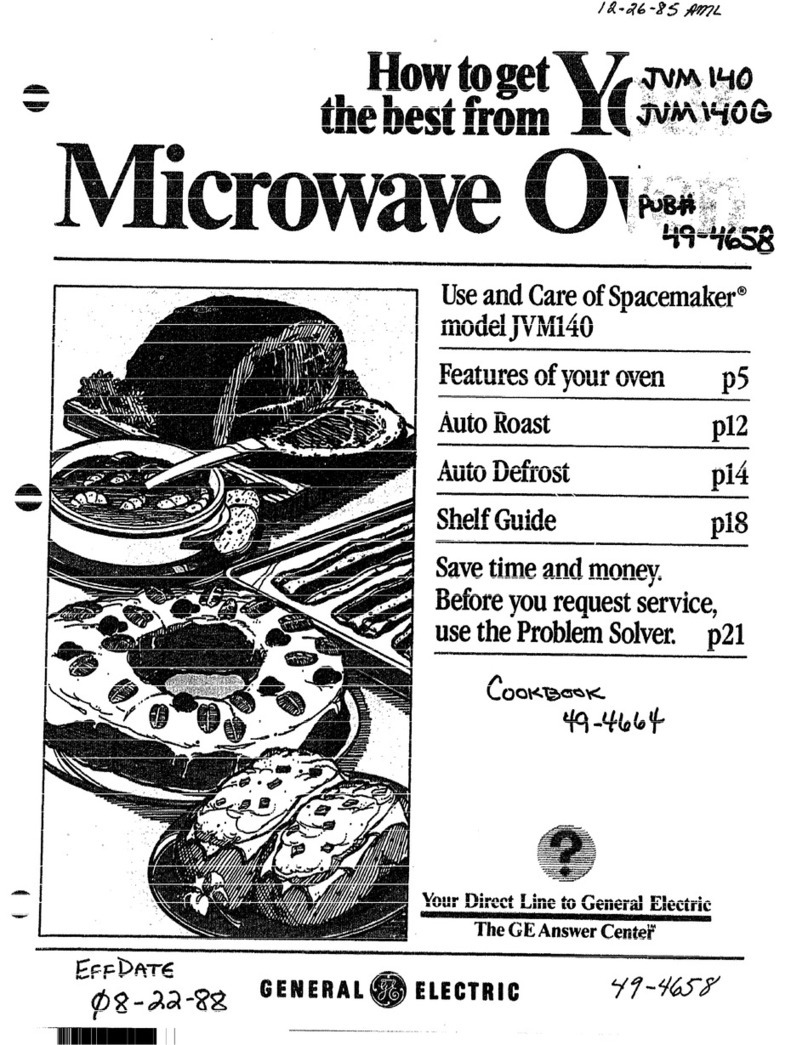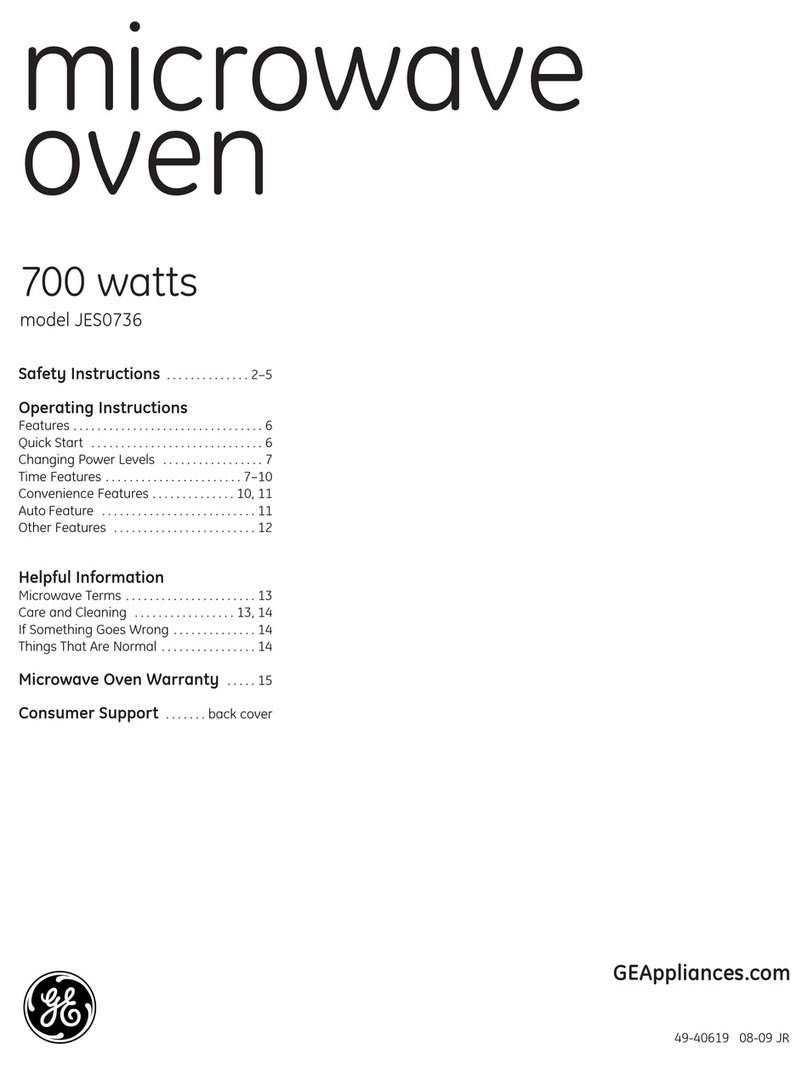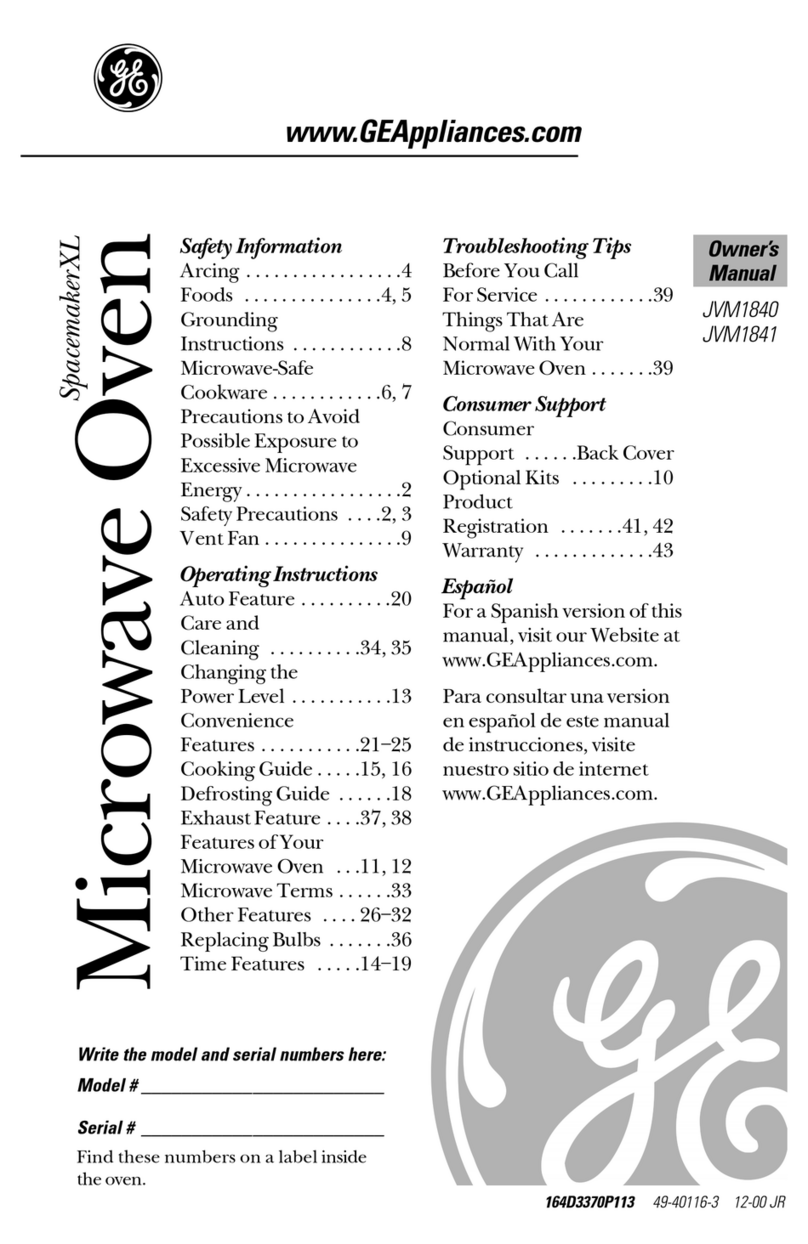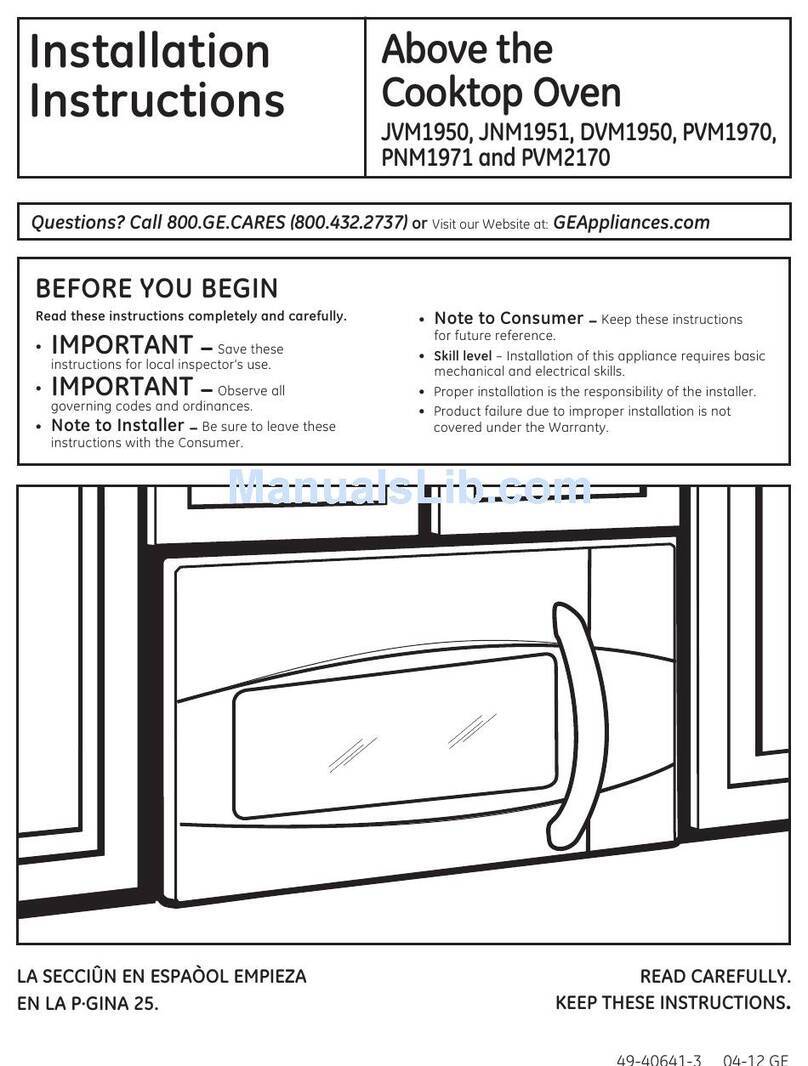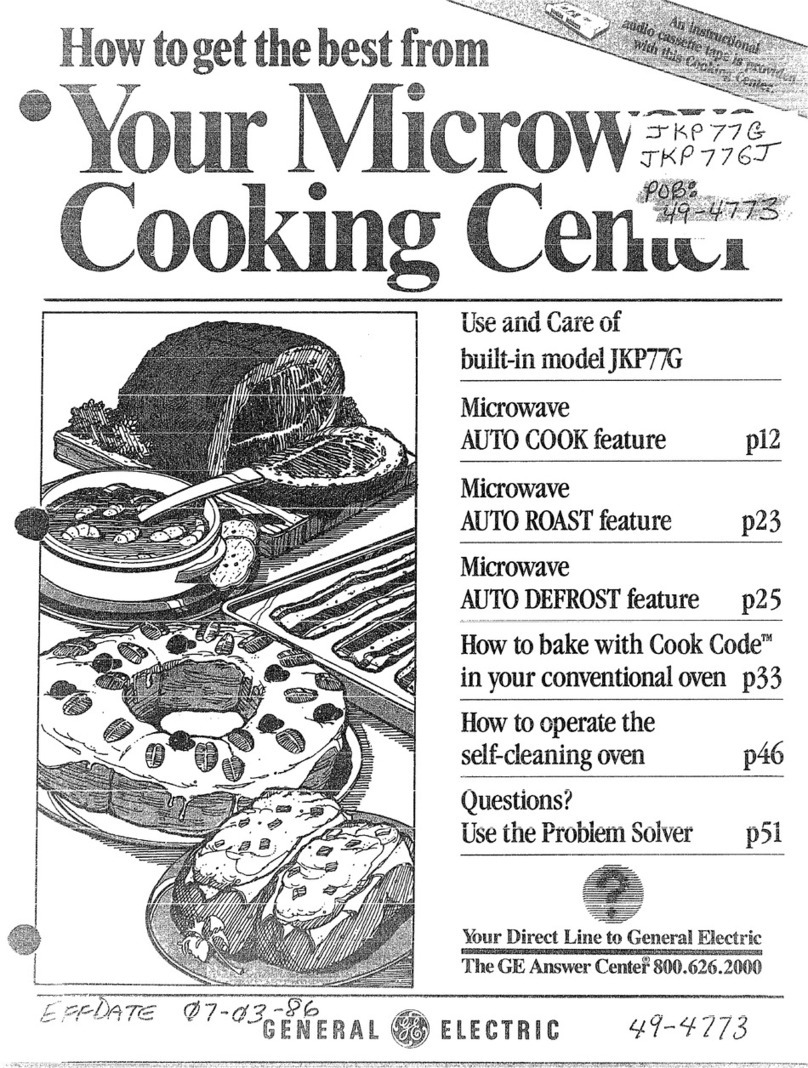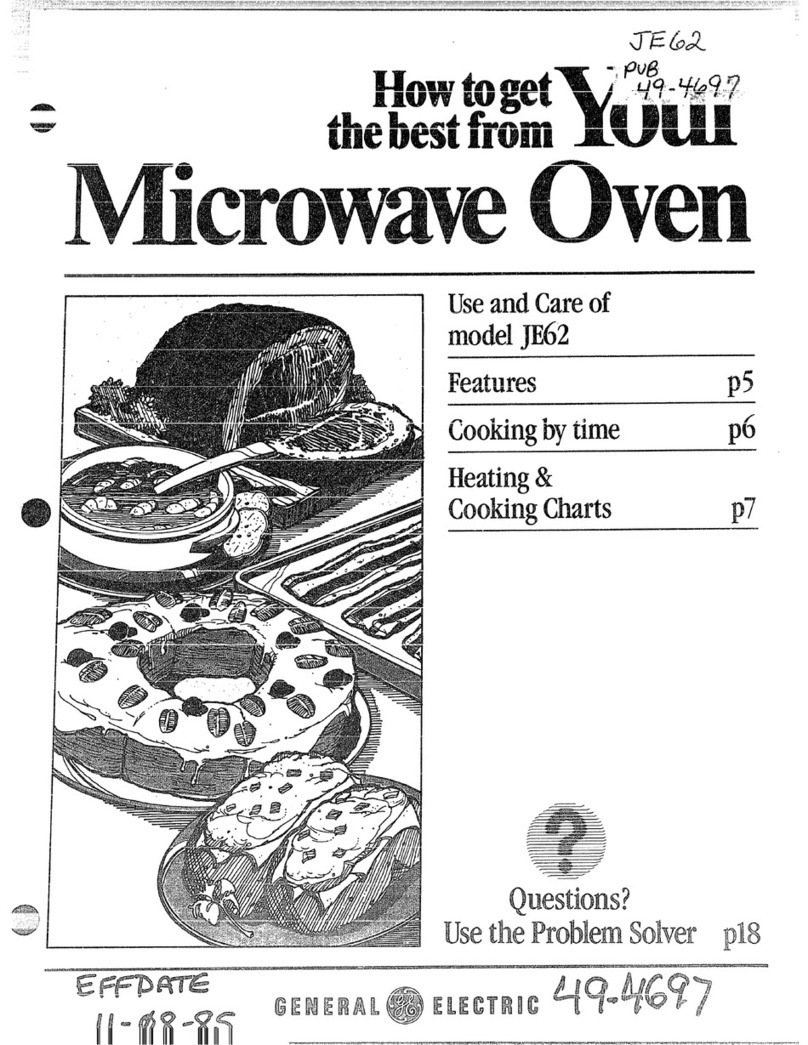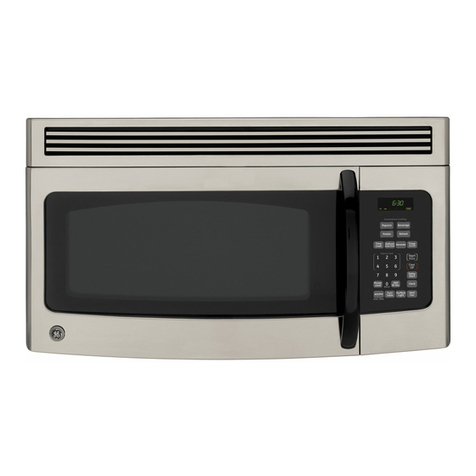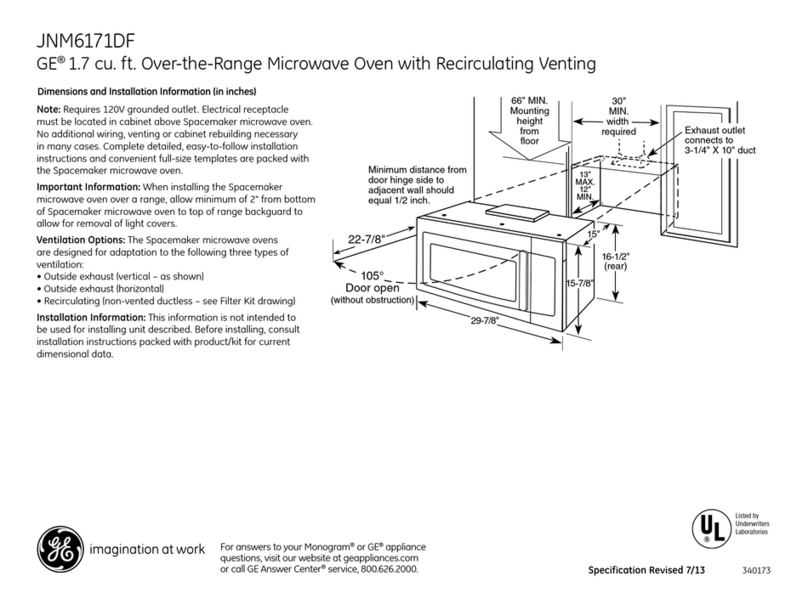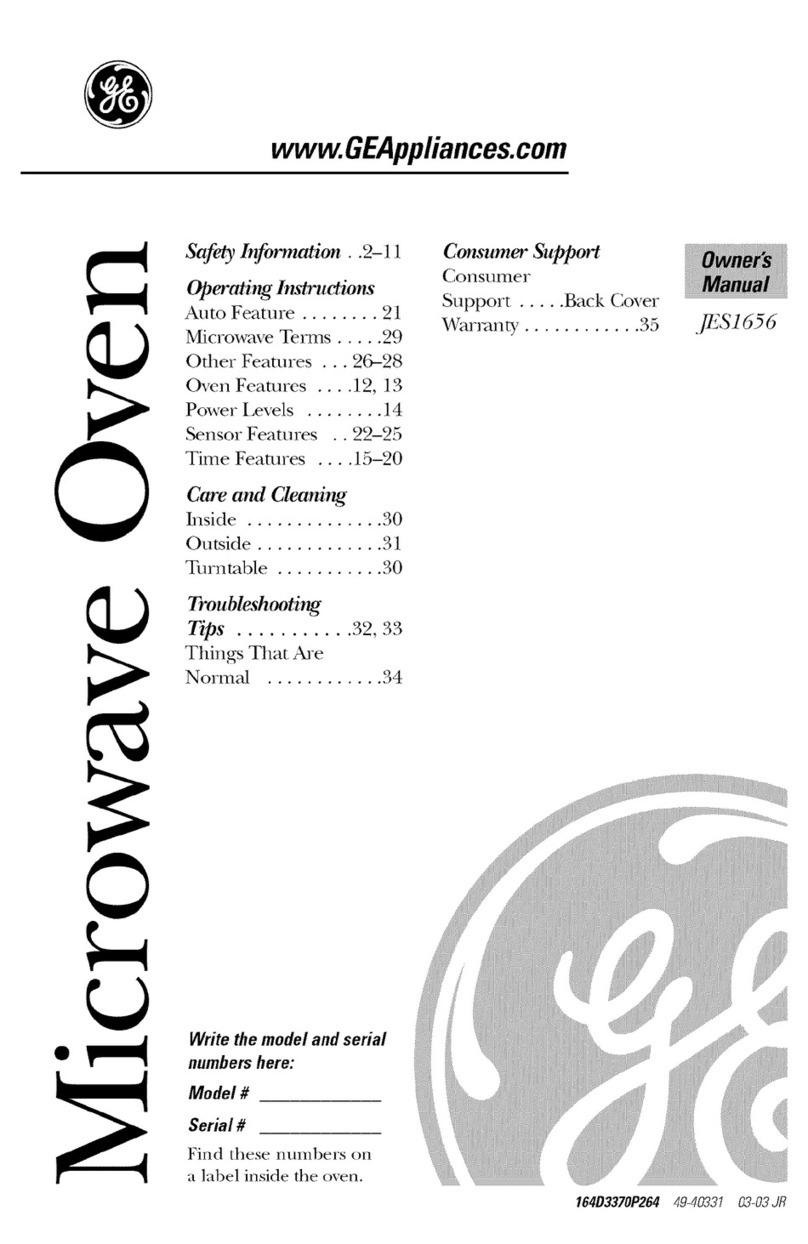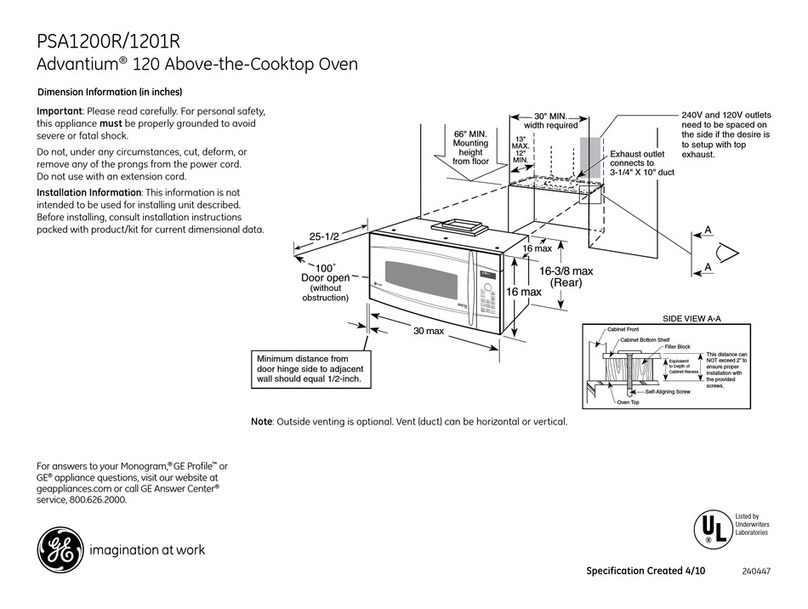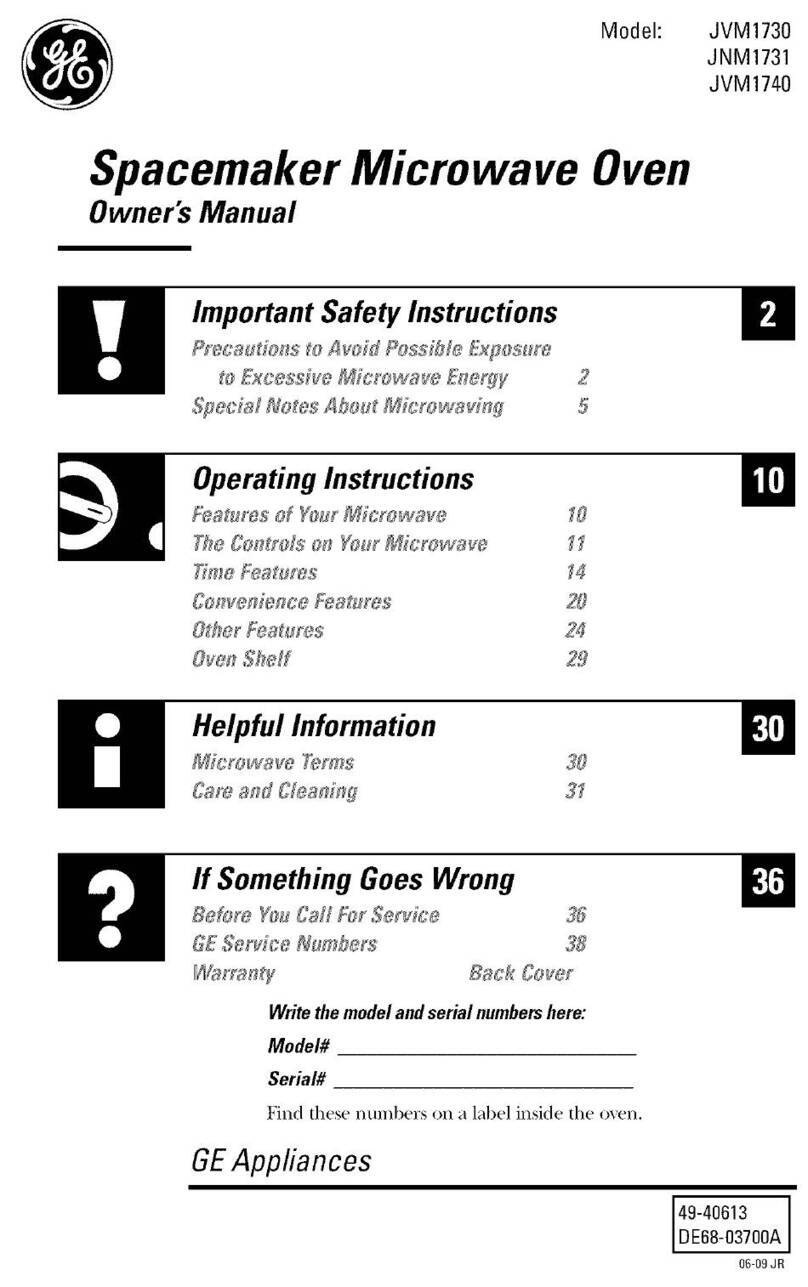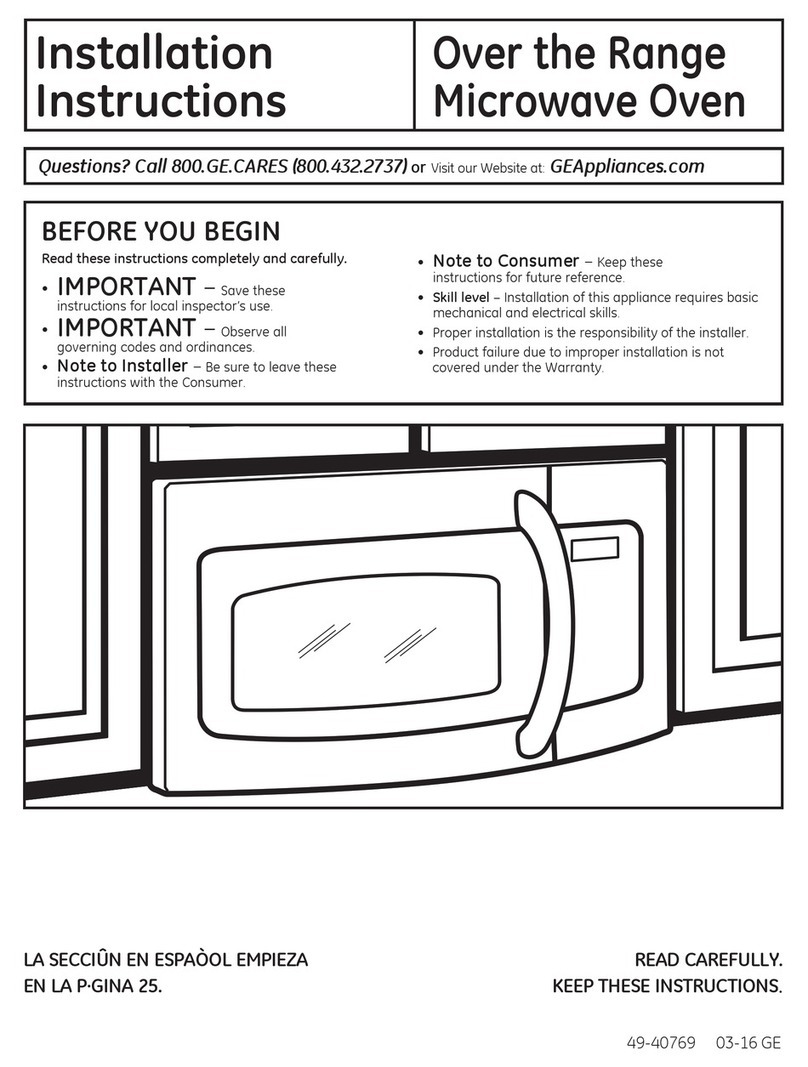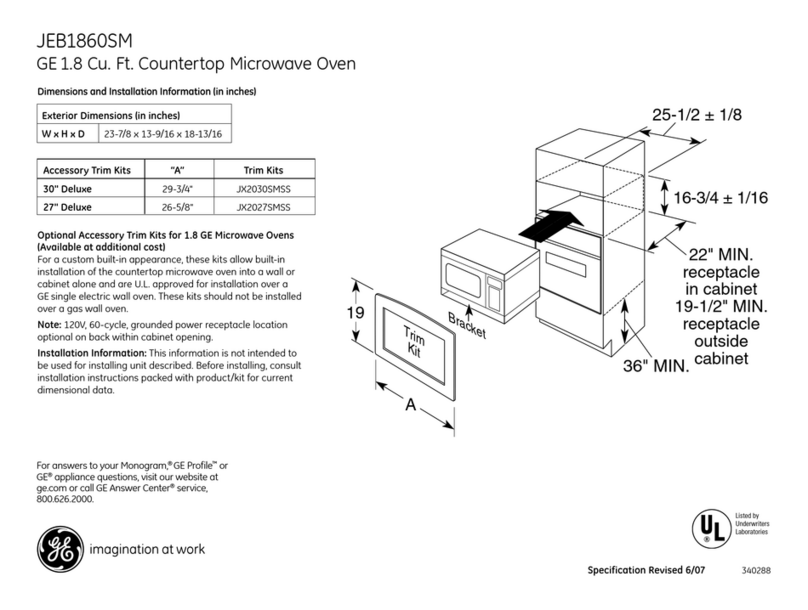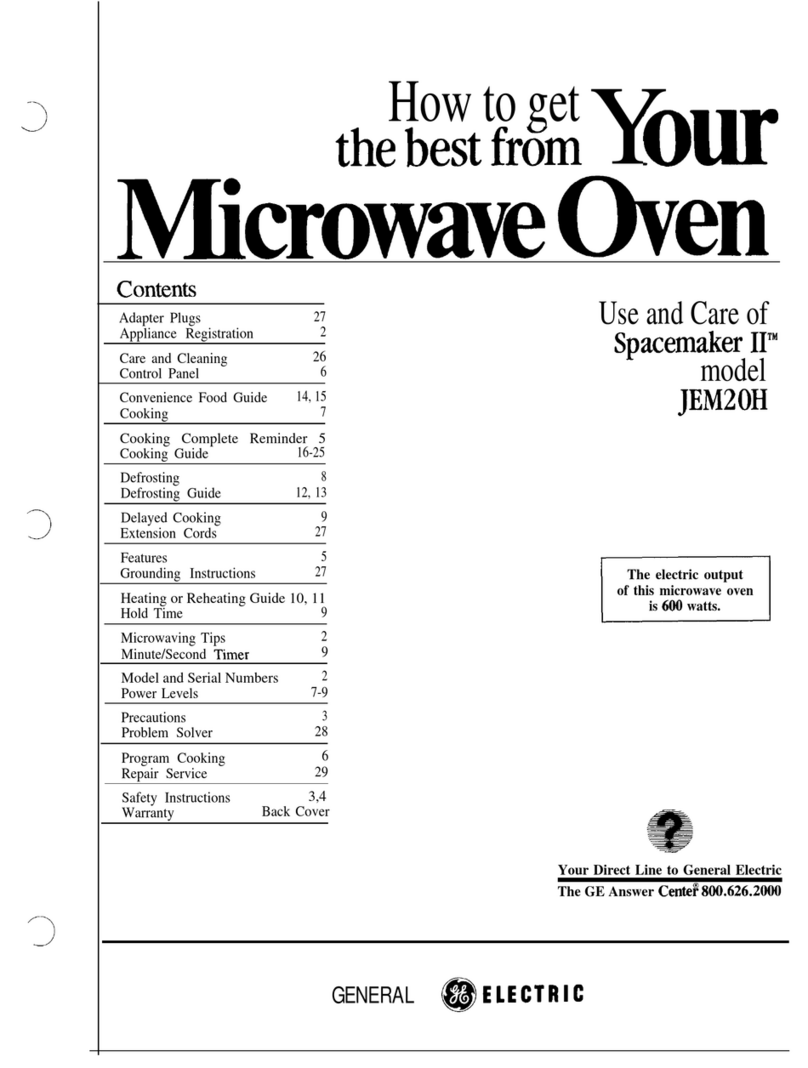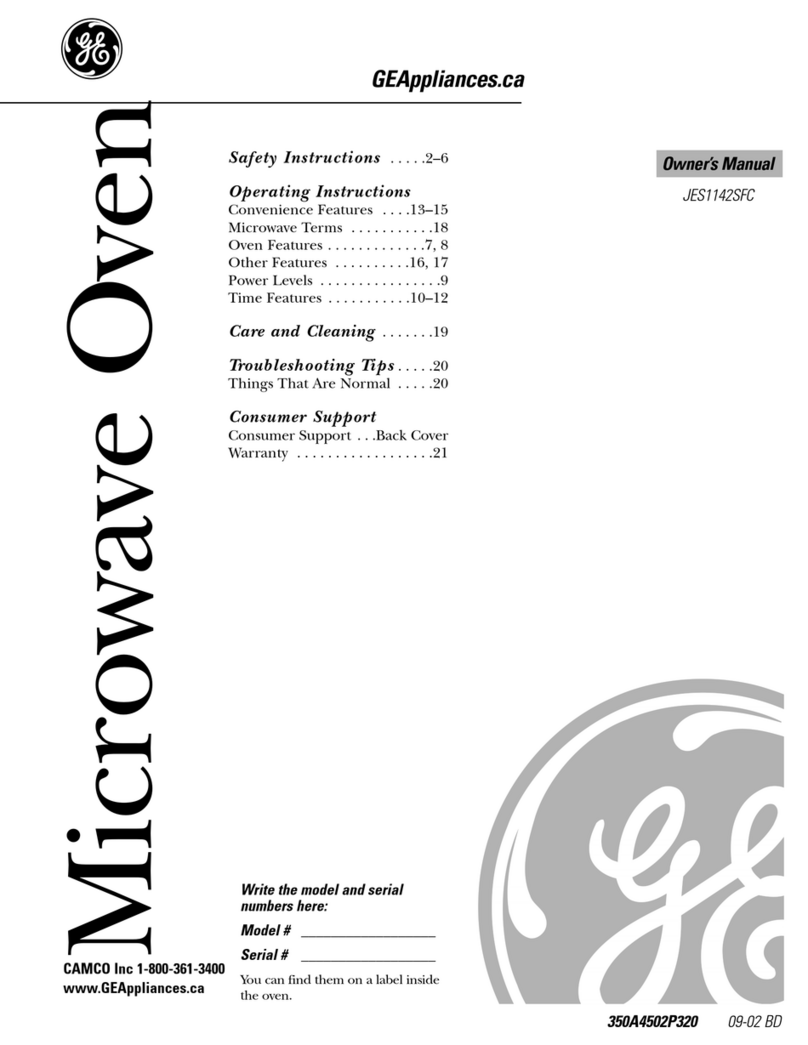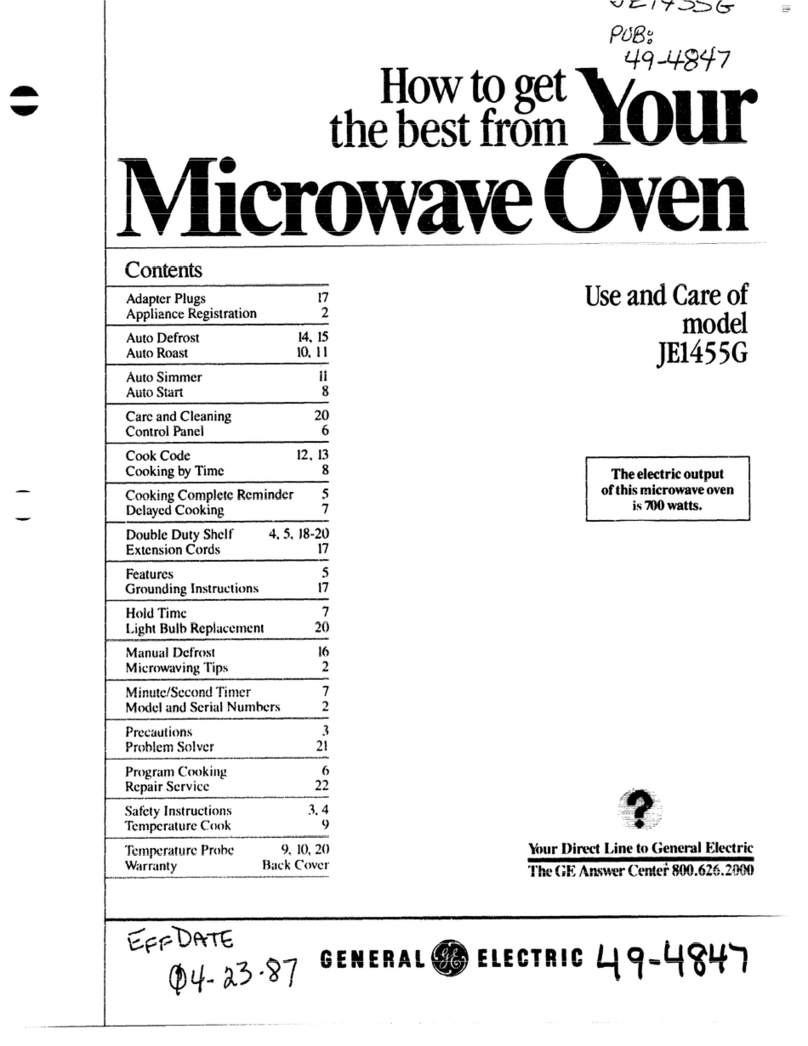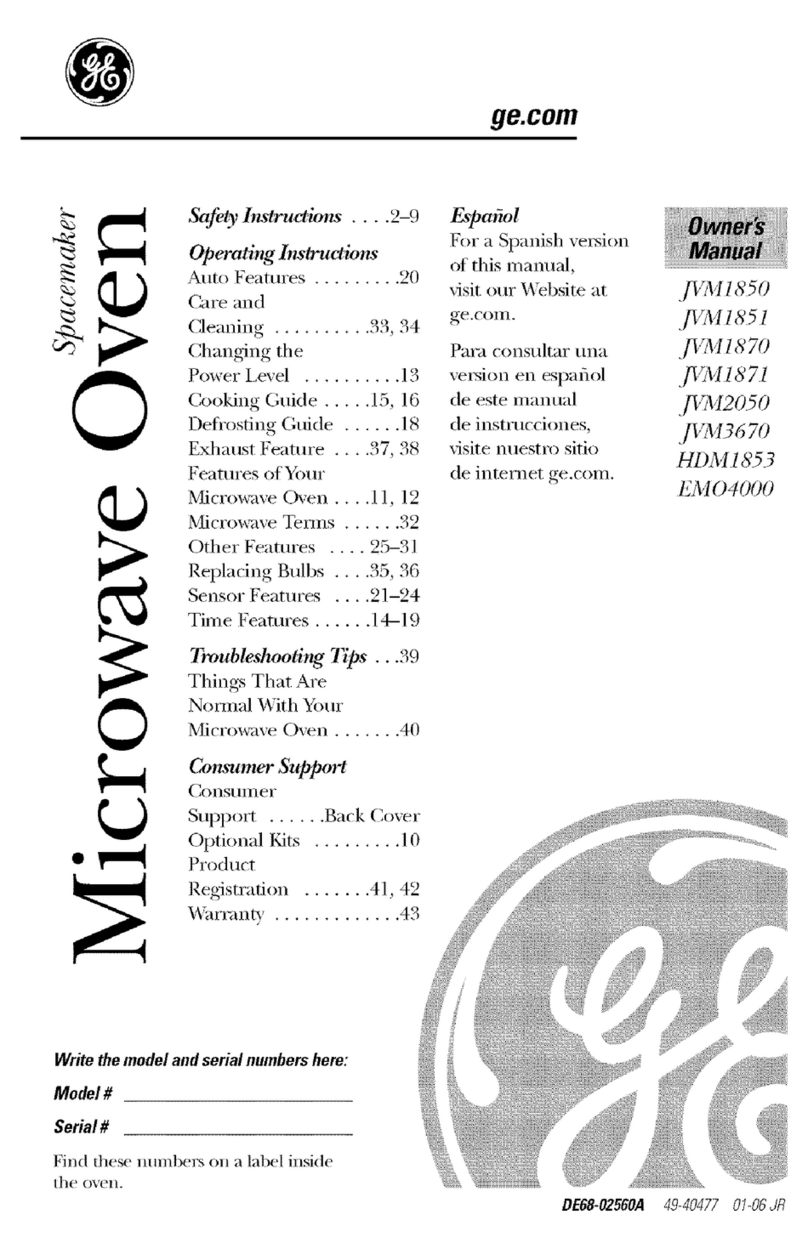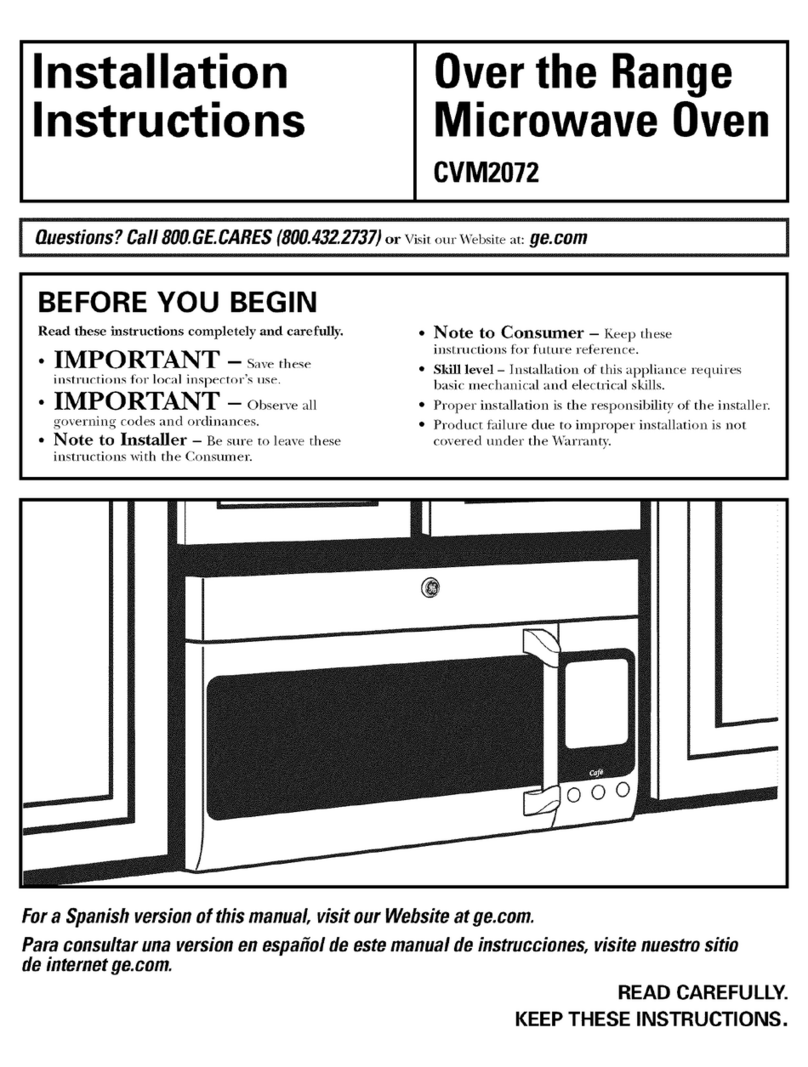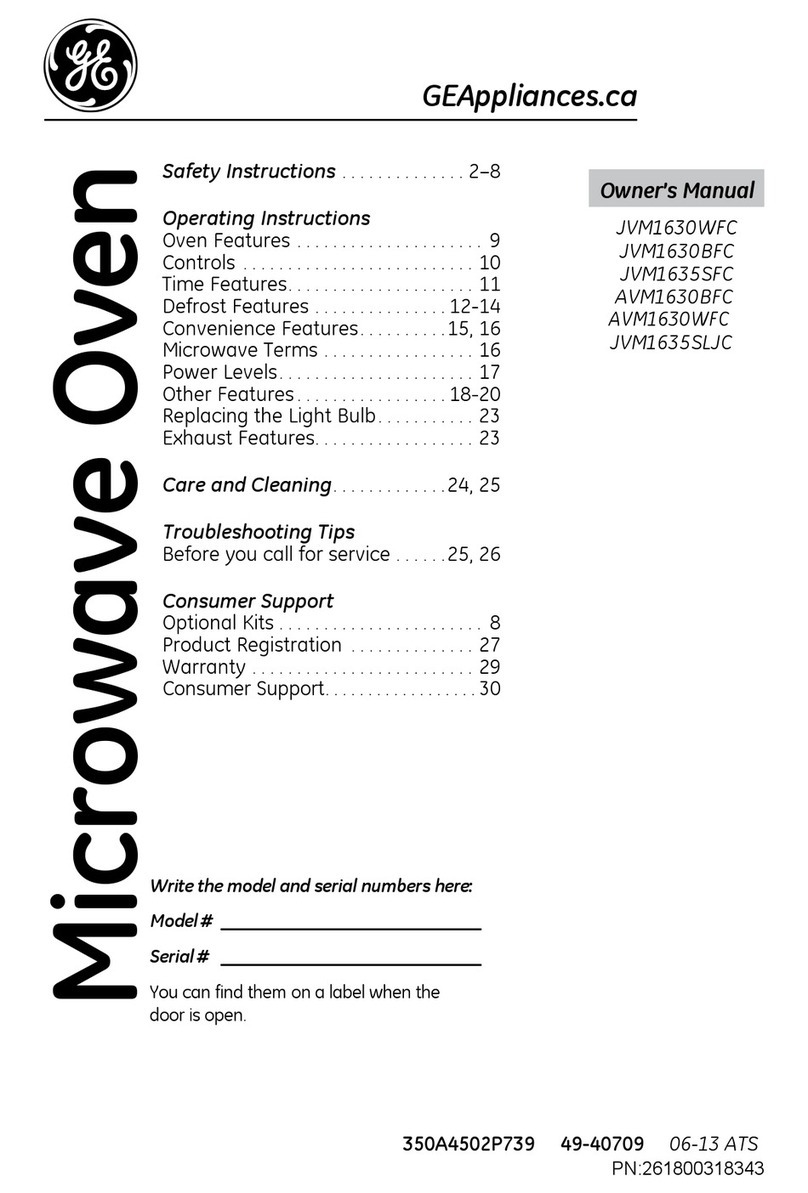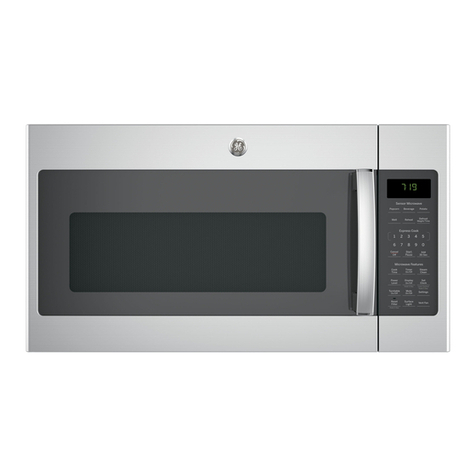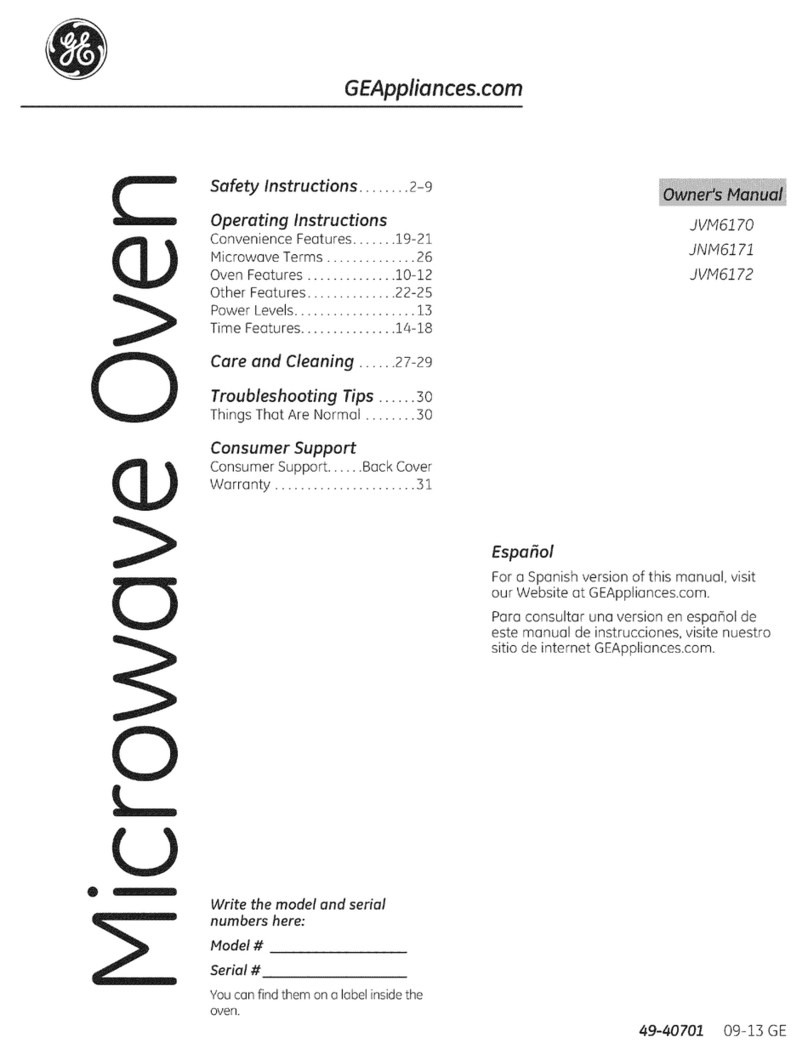--If materials inside oven should ignite, keep
oven door closed, turn oven off, and disconnect
power cord, or shut off power at the fuse or
circuit breaker panel
• Don't defrost frozen beverages in narrow
necked bottles (especially carbonated beverages).
Even if the container is opened, pressure can build
up. This can cause the container to burst, possibly
resulting In injury.
•Use metal only as directed in this book. TV
dinners may be microwaved in toil trays less than
3/4" high: remove top foil cover and return tray
to box. Wben using metal in the microwave oven.
keep metal (other than metal shelf) at least
1inch away from sides of oven.
•Cookware may become hot because
of heat trmlsferred from the heated
food. Pot holders may be needed to
handle the cookware.
•Sometimes, the oven floor and walls can
become too hot to touch. Be careful touching the
floor and wails during and after cooking
•Foods cooked in liquids (such as pasta) may tend
to boil over more rapidly than foods containing
less moisture, Should this occur, refer to the Care
and Cleaning sechon(s) for instructions on how to
cleaQ the inside of the oven
•Thermometer--Do not use regular cooking
or oven thermometers when cooking by
microwave or combination. The metal and
mercury in these thermometers could cause
"arcing" and possible damage to the oven. Do
not use a thermometer in food you are
microwavmg unless the tbemaometer is designed
or recommended for use in the microwave oven.
•Remove the temperature probe from the oven
when not using it to cook with. If you leave the
probe inside the oven without inserting it m food
or liquid, and turn on nficrowave energy, it can
create electrical arcing in the oven, damage oven
walls and damage the temperature probe.
Plastic cookware--Plastic cookware designed
for microwave cooking is _ery useful, but should
be used carefully. Even m_crowave-safe plastic
may not be as tolerant of overcooking conditions
as are glass or ceramic materials and may soften
or char if subjected to short periods of
overcooking. In longer exposures to overcooking.
the rood and cook_ are could ignite. For these
reasons' l) Use microwave-safe plastics only and
use them in strict compliance with the cookware
manufacturer's recommendations. 2) Do not
subject empty cookware to micro_aving. 3) Do
not permit children to use plasnc cookware
without complete supervision.
When cooking pork, follow the directions
exactly and always cook the meat to an intemal
temperature of at least 170°E This assures that, in
the remote possibility that mchma may be present
in the meat, it will be killed and meat will be safe
to eat.
Do not boil eggs in a microwave oven. Pressure
will build up reside egg yolk and will cause it to
bmst, possibly resulting m injuu.
•Foods wRh unbroken outer "skin"
such as potatoes, sausages, tomatoes,
apples, chicken livers and other
giblets, and egg yolks (see previous
caution) should be pierced to allow
steam to escape during cooking.
•Not all plastic wrap is suitable for use in
microwave ovens. Check the package for
proper use.
•Spontaneous boiling--Under
certain special circumstances,
hquids may start to boil during
or shortly after removal flora the
microwave oven. To pre_ent burns
from splashing liquid, stir the liquid
briefly before removing the container
from the microwave oven.
• Some products such as whole eggs and
sealed containers--for example, closed glass
jars--wilt explode and should not be heated in
this imcro_ ave oven. Such use of the microwave
oven could restdt m injury,
(t'onuntwd nert pag_,l
5
